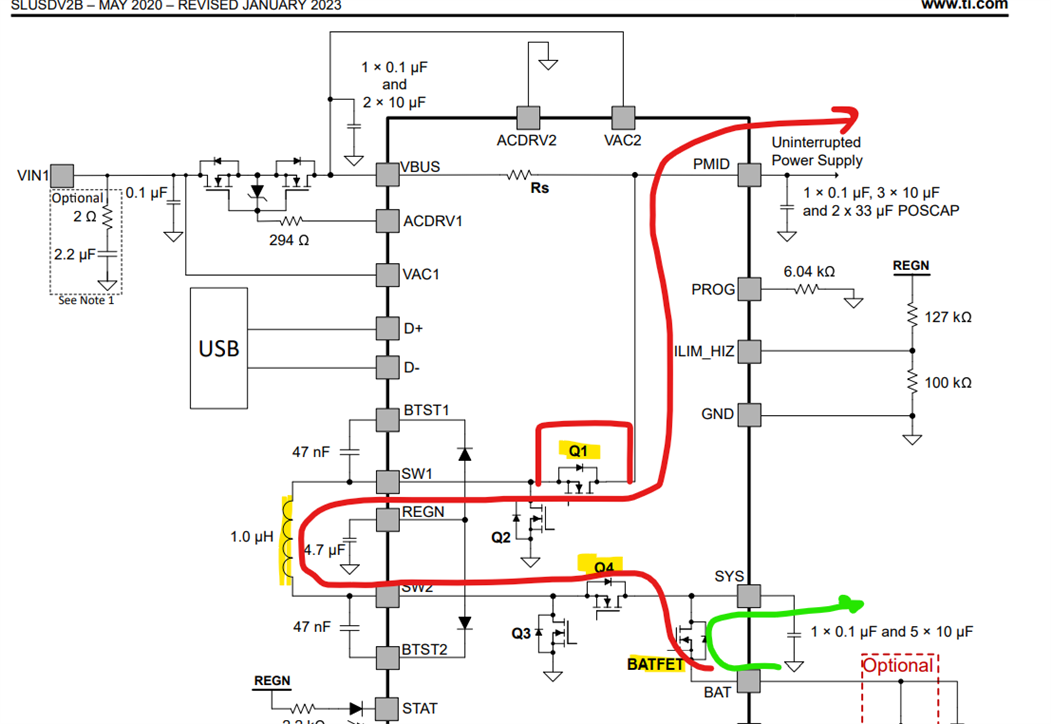Tool/software:
Hi all,
So it seems that PMID is used to solely function as an uninterrupted power supply output, but I am confused on why the SYS output can also not serve to function as the same thing, if not better, since it's directly connected to the battery through the BATFET?
The PMID needs to get power from the battery through more FETs, through the switching inductor, and then finally on the output, so I am confused on why PMID is used for a backup power supply vs just using the SYS output?

When one of the adapters is plugged in to VBUS, we will get an output on SYS anyways, as well as charge our battery if needed, and then when the adapter is removed it makes sense SYS would have no issues transitioning to the battery faster than PMID, since its separated only by the BATFET.
I am having trouble understanding why PMID exists really...it seems simpler and more efficient to just remove PMID all together and just use the SYS output as a UPS and regular system load...
Thanks,
Nicolas


